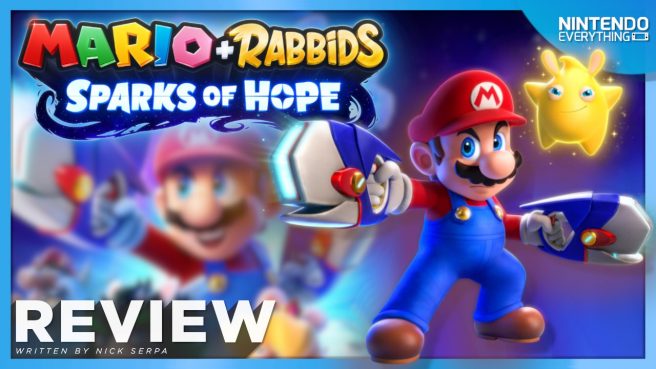[Review] Mario + Rabbids Sparks of Hope
System: Switch
Release Date: October 20, 2022
Developer: Ubisoft
Publisher: Ubisoft
Conceptually, there was really no good reason why a game as bizarre and audacious as 2017’s Mario + Rabbids Kingdom Battle should have worked – but it did. Not only did it somehow make a crossover between Nintendo’s most iconic cast of characters and Ubisoft’s most – er, divisive – not feel completely bonkers, but it also introduced an accessible and creative take on turn-based tactics to a console that, at that point, was light on quality options. I enjoyed Kingdom Battle so thoroughly that initially, I couldn’t fathom why a sequel would need to exist. But after spending over 30 hours exploring sprawling planets and battling every foe I’ve crossed paths with, I don’t feel like it’s an exaggeration to call Mario + Rabbids Sparks of Hope one of Mario’s finest outings to date.
It’s been fifteen years since our prolific plumber first visited the depths of space in Super Mario Galaxy, and since then he’s had a surprisingly active career as an astronaut, visiting space again in both Super Mario Galaxy 2 and even Super Mario Odyssey. Sparks of Hope’s premise feels like a sort of “greatest hits album” in that sense – Mario and company are just chilling near Peach’s castle, casually chatting about how “nothing could go wrong” when a massive cosmic manta ray (yes, really) comes out of nowhere and coats the galaxy in a gooey ink-like substance called Darkmess. On top of that, the gang learns that their beloved friend Rosalina has been captured and is being held in the center of the galaxy. And so, after a brief series of surprisingly epic tutorial battles that introduce the basic mechanics of combat, Mario, Luigi, and Peach blast into space (along with their Rabbid counterparts) to planet-hop their way to victory.
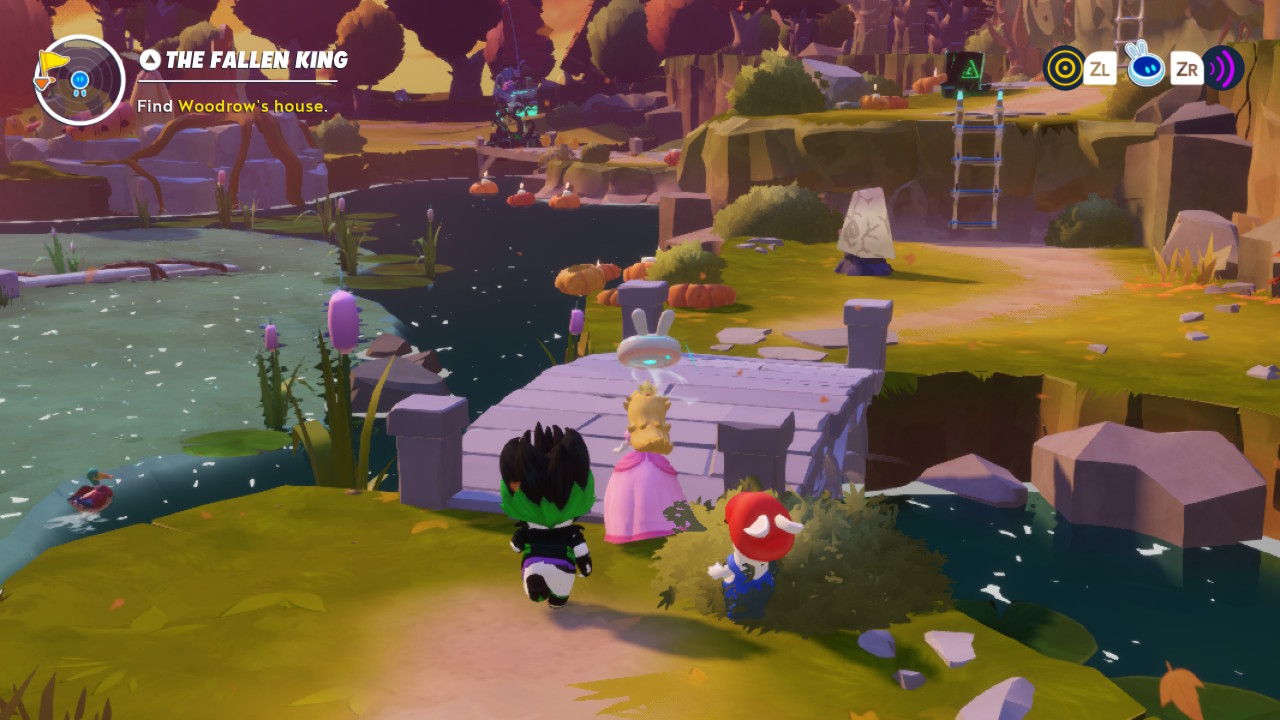
While Sparks of Hope is still a tactics game at heart, it plays almost completely differently from its predecessor Kingdom Battle. The scope of this game feels utterly massive for a Mario title, moreso than any of his previous adventures. The game spreads its battles and activities across five major planets, each acting as both a hub-world filled with things to do, but also as a sort of meta-puzzle in of itself. See, to get to the center of the galaxy, you’re tasked with collecting Darkmess Crystals from each planet to fuel up your ship and let you hop to your next destination. There’s generally two of these crystals on each planet, but they’re often located in what I can only describe as maze-like dungeons filled with not only the expected tactical battles, but also environmental puzzles that block your way. And don’t think that these dungeons are always going to be easy to get to, either. They’re often located at opposite corners of their respective planets, and simply reaching them is a rewarding challenge in its own right. The planets in Mario + Rabbids Sparks of Hope not only get larger and more sprawling as you progress through the game, but also more convoluted and vertical. It’s a huge departure from Kingdom Battle, which led players through simplified, mostly linear pathways.
This new approach to exploration and progression is, in my opinion, the greatest strength of Sparks of Hope, which is very high praise considering how excellent this game is as a whole. Make no mistake, if you want to spend your time exploring every nook and cranny of these planets as I did, you can easily expect to double your playtime, and you’ll probably enjoy almost every moment of it if that’s your playstyle. There’s so much to do on each planet, in fact, that you’ll need to backtrack and revisit planets later in the game if you really want to see and do everything. I’m four planets and thirty hours into Sparks of Hope and have been trying to complete as much of the side content as possible as I progress through the game, and I know there’s easily another 10-15 hours ahead of me if I plan to 100% the game.
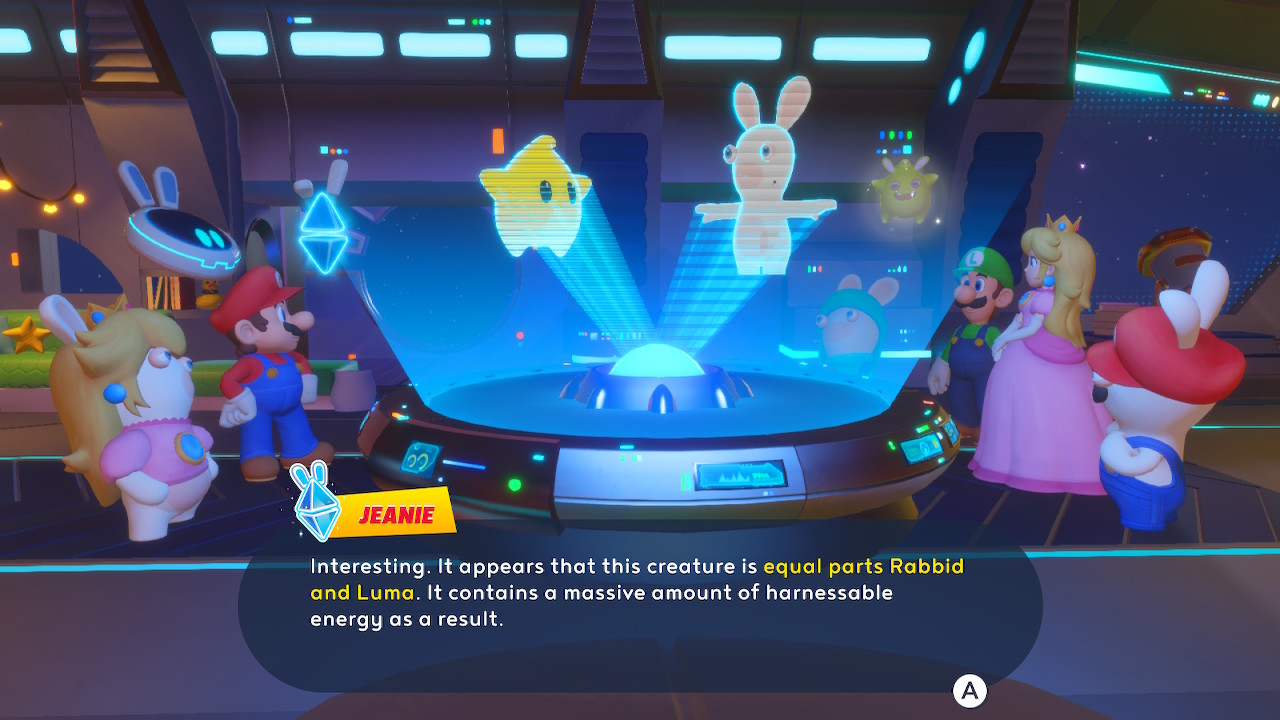
Part of the reason why I’ve found myself so immersed in these worlds and all these activities – which, I should be clear, is not always a given for me with open-world games – is because I really don’t think there is a single piece of underdeveloped or boring content in this game. The dungeons all have a unique theme and gimmick – an early highlight takes place in a Luigi’s Mansion-styled ice palace with hidden paths and labyrinthine doors, while another takes place in a Darkmess-drenched forest with invisible walkways that need to be revealed to progress. Out in the open world, you’ll find reflex-based red and blue-coin challenges to complete, NPC’s who need you to retrieve things for them, and locked doors hiding dream-like worlds that can only be unlocked after completing a certain amount of other sidequests. I suppose one critique I have is that each planet contains the same type of activities, so it is possible that some players will get bored with the structure of the content over time, but this wasn’t the case for me.
All of this is an immense amount of fun, but Sparks of Hope is at its core a tactics game, albeit one unlike anything I’ve played prior. Running into an enemy in the overworld will whisk your party away to a tun-based combat encounter, but in a stroke of innovative genius, Sparks of Hope completely abandons the grid-based overlay that typically dictates how characters can move in these types of games. Instead of selecting a predetermined, rigid movement path for each of your party members, now you can freely move each character around a certain portion of the battle map before launching an attack and locking them into place. This single change completely refreshes how a turn-based tactical game can work, and I’m now convinced is the biggest contributor to why combat in Sparks of Hope is so freaking satisfying. It enables so much more room for experimentation in each combat scenario than was ever possible before.
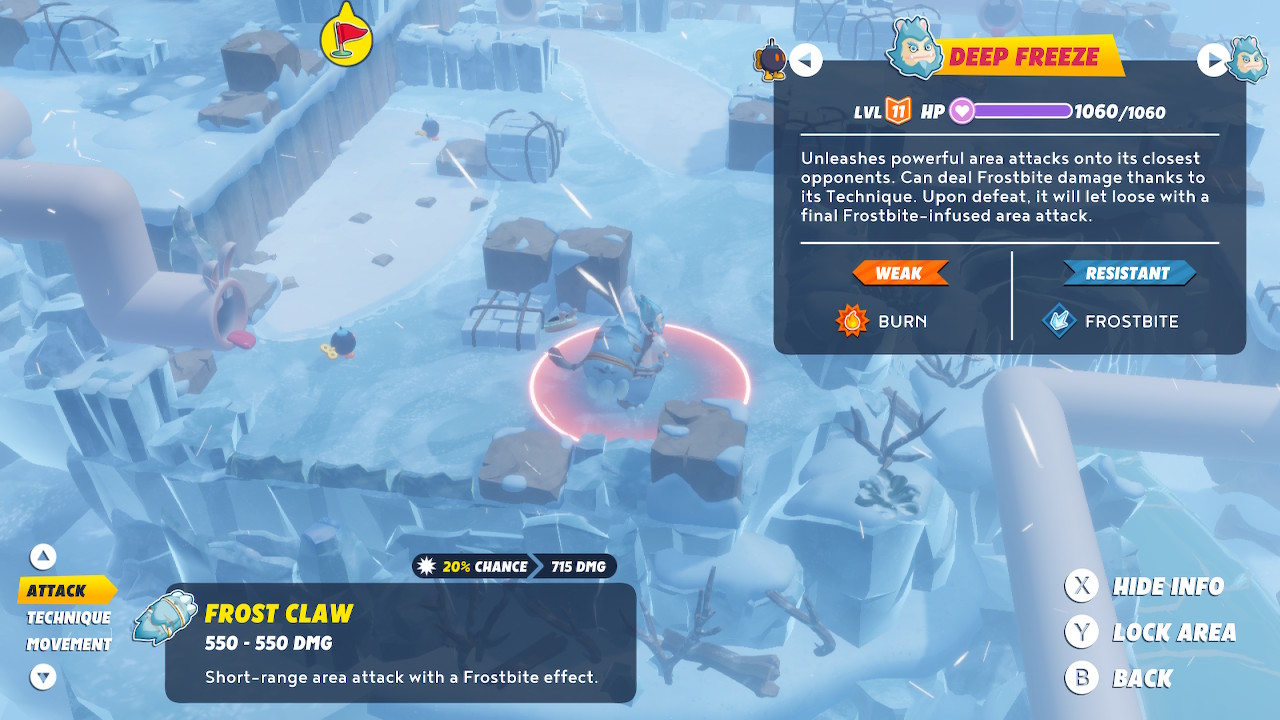
With this new approach to movement in combat comes a new bag of tricks that, when utilized to the fullest, opens a huge range of tactical options. Before even launching a weapon-based attack, party members can dash and slide into enemies to deal some extra damage, and then can continue to move around the map – meaning its now possible to deal damage before returning your team to safe cover. On top of that, some combat maps now contain jump pads, which can be used to spring your characters into the air and extend the range of where they can go. Similarly, your Heroes can launch each other into the air similarly to how they could in Kingdom Battle, except now you can decide in real time where you’ll land. To reiterate, you can do all of this before even drawing a weapon on your enemies.
The other huge change in Sparks of Hope are the titular Sparks, which are slightly unnerving, slightly adorable fusions between Rabbids and Lumas (the latter of which originally appeared in Super Mario Galaxy, if you’re one of the few Nintendo fans who somehow missed that masterpiece). Each character can have up to two Sparks assigned to them, and each of the 30 Sparks you can find and unlock has a unique set of attributes that can give players a massive advantage in combat when fully utilized. Some Sparks grant buffs that are always helpful, like letting their Hero deal extra damage, or reflect a certain percentage of damage back towards the enemy. Others are elemental-based – for example, it would be wise to equip a fire-based Spark when dealing with ice-based foes to maximize damage output. There are also some unique Sparks tucked away in the game, like one that lets you summon creatures to act as support allies for a turn, and another one that turns your hero become invisible for a bit. Sparks can be upgraded over time by feeding them Star Bits, making them more powerful or available to use more often.
The new movement system combined with all the abilities that Sparks can endow creates a huge amount of tactical depth that simply didn’t exist at this level in Kingdom Battle. It’s now possible to completely decimate an entire battlefield of enemies before they’ve had a turn to attack through clever navigation and use of abilities, which is always satisfying. I found the level of challenge on Average difficulty to be just right for my tastes – accessible enough that I could usually recover from making poor tactical choices but challenging enough that getting too confident would sometimes come back to bite me.
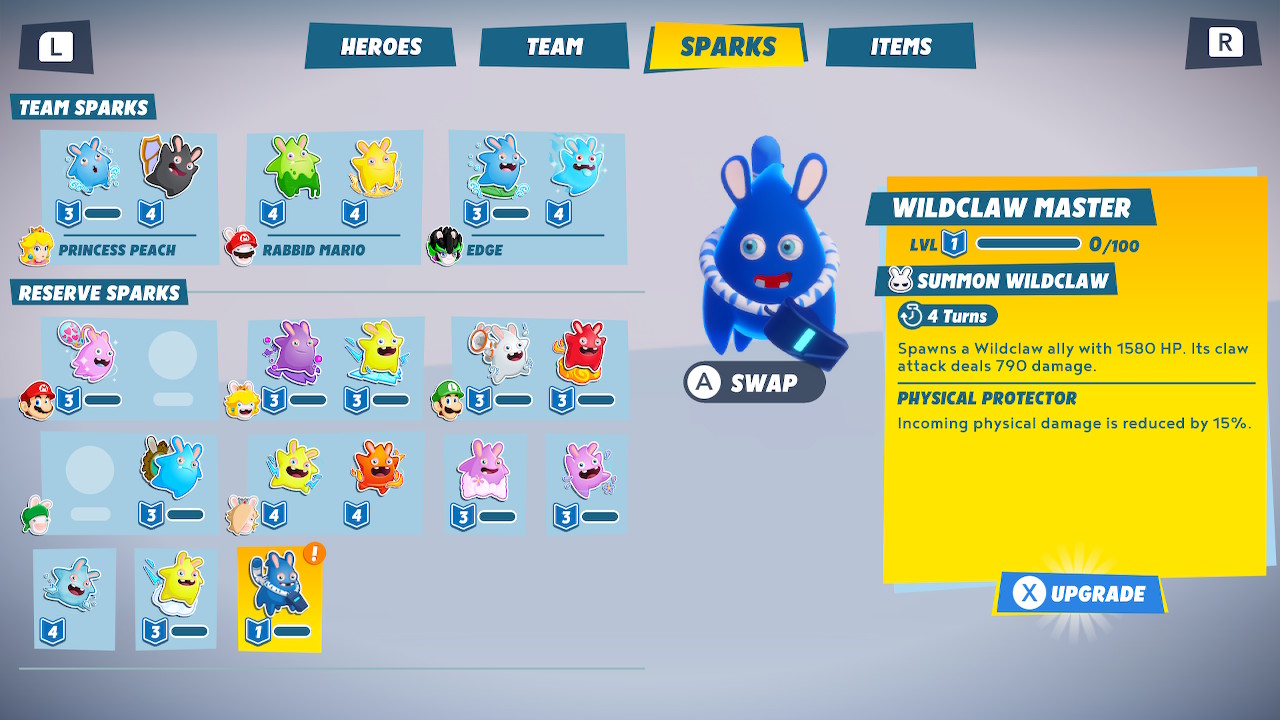
It helps that you have an opportunity to optimize your party and Sparks before each battle. Clicking in the left analog stick lets you use Beep-O – the returning flying Roomba from the first game – to survey over the battlefield and let you scout enemy placements and abilities. Party member selection is also important, as certain heroes are going to be more useful in some situations than others. Luigi, for example, is best when dealing with long-range enemies thanks to his sniper rifle (I’m not kidding) whereas Peach’s Boom-Brella is great for dealing a wide spread of damage to clusters of foes. You’ll also want to consider Special Abilities when building a party – Rabbid Peach, for example, is the only character who can heal other teammates. Each of your party members has their own individual Skill Tree that will let players further upgrade their abilities as the party collectively levels up, and delightfully, you can reallocate spent skill points at any time to experiment with different character builds.
So, yeah. Don’t let the kid-friendly branding fool you; Sparks of Hope can absolutely be a serious tactical experience if you want it to be. It can also be customized to be incredibly accessible, so much so that even kids could probably get through it. Want to set up your game so that characters have their health restored after each battle? You can do that! Want to turn on invulnerability in combat to cruise through battles and focus your playstyle more on exploration? Go ahead! Want to crank things up a notch and make enemies deal extra damage? You’re free to do so at any time, as long as you’re not in the middle of a battle. There are no benefits or repercussions to adjusting your difficulty in either direction, which I appreciate as it incentivizes players to enjoy the game on their own terms.
I do have to point out that, with all the time that players are likely to spend navigating between menus and the game itself, load times are often just little too long to feel acceptable to me. I can understand loading screens when entering a new environment – this is a big, ambitious game that pushes to Switch to its limits – but I don’t really understand why it should take more than a split second to pull up a simple menu for me to change my party. It’s not the biggest deal in the world, and the game is still absolutely a joy to play, but it’s just obtrusive enough that it feels worth pointing out. It’s also worth mentioning that, despite a well-intentioned day-one patch from Ubisoft, Sparks of Hope struggles to maintain a consistent frame rate, especially in the overworld. The game is perfectly playable, so don’t let that be a reason for not playing the game if you’re interested in it, but it can be occasionally distracting when exploring.
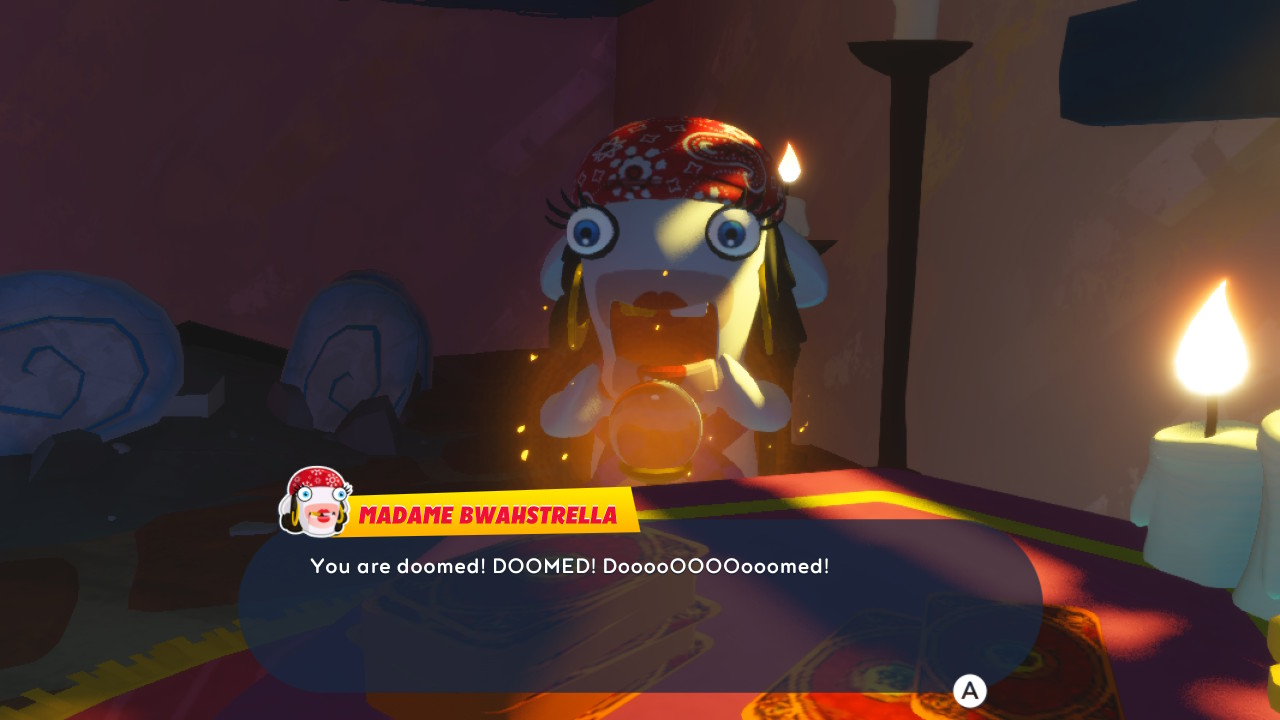
The flipside of that particular coin, though, is that Sparks of Hope is also a very pretty game that clearly has had an immense amount of love poured into its smaller details. This is of large thanks to the quality of animation, which adds a level of expressiveness to anything that moves, from flags fluttering in the wind to the unique way each character runs through the game world. (The way Rabbid Rosalina grumpily shuffles around never ceases to make me chuckle). Cutscenes are beautifully directed and bursting with color and effects, and the special animations that play when using a character’s signature ability in combat manages to feel simultaneously epic and silly in the way Mario games should be.
I also want to highlight the fact that not only does this game have significantly more voice acting than Kingdom Battle, but it’s also often hilarious and the perfect accompaniment to the wacky and clever writing. My absolute favorite character in the game is a side character called Madam Bwahstrella, a Rabbid who is also a fortune teller, and who happens to have some of the funniest freaking outbursts in the game. Then you’ve got the appropriately named Professor Backpack, a Rabbid with a comically large backpack who loves to verbally opine about the legends of the planets in the silliest way possible. Most of the voice acting in this game is just a few scattered words here and there – only a few characters will ever talk in full sentences – so it’s a testament to the vocal performances of the games actors that I was consistently smiling whenever something was said. Especially the Rabbids! I can’t imagine having an opinion like that a decade ago.
The excellent audio design, and the game as a whole, are elevated even more by the phenomenal soundtrack that permeates throughout the game. Returning composer Grant Kirkhope is joined by the legendary Yoko Shimomura of Final Fantasy fame, and Gareth Coker, who is perhaps best known for his work on the Ori franchise. The result is a soundtrack that expertly conveys the grandiosity of the adventure at hand during combat, the intrigue and mystery of the world during exploration, and the lighthearted quirkiness of its characters and plot beats. It’s all fully orchestrated and is one of the strongest overall videogame soundtracks I’ve heard in a long time. Other reviewers have said they fully expect Sparks of Hope’s music to win some awards later this year, and I’m inclined to agree. It really is that good.
The Verdict

Mario + Rabbids Sparks of Hope isn’t just one of the best Mario games ever made, it’s one of the best exclusives on the Switch, full-stop. It not only represents a huge, innovative step forward for the tactics genre, but it’s a creativity and impeccably-structured experience that is unlikely to bore. It’s a dense game packed with a ton of content, but remarkably, all of it is fun to seek out and engage with, avoiding the typical pitfalls that other open-world games struggle with. It’s a joy to look at, a joy to listen to, and a joy to play at every conceivable level.
Mario + Rabbids Sparks of Hope copy provided by the publisher for the purposes of this review.
